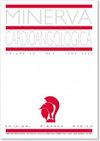Long-term prognostic potential of microRNA-150-5p in optimally treated heart failure patients with reduced ejection fraction. A pilot study.
Q3 Medicine
引用次数: 3
Abstract
BACKGROUND In a previous study, we found that miR-150-5p was specifically downregulated in patients with advanced heart failure (HF). Here, we investigated the long-term prognostic potential of miR-150-5p. METHODS We studied optimally treated HF outpatients with reduced ejection fraction. The primary outcome comprised the composite of death, urgent heart transplantation (HT) and ventricular assist device (VAD) implantation within 30 months. We used recursive partitioning analysis to identify the optimal log miR-150-5p cut-off. The association of log miR-150-5p with the primary outcome was examined using Cox regression analysis. We used the Meta-Analysis Global Group in Chronic Heart Failure (MAGGIC) risk score for adjustment in multivariable analysis. Finally, we compared the global fit of three models (MAGGIC score+miR-150-5p, MAGGIC score+NT-proBNP, and NT-proBNP+miR-150-5p) using Akaike Information Criterion. RESULTS Recursive partitioning analysis identified the value of -2.22 as the optimal cut-off for log miR-150-5p. Thirty-month survival free of urgent HT/VAD implantation was 31% among the patients with log miR-150-5p <-2.22 and 86% among those with log miR-150-5p >-2.22. Crude hazard ratio (HR) of the primary outcome for log miR-150-5p expression level < -2.22 was 6.70 (95%CI:2.31-19.38;p<.001). After adjusting for the MAGGIC score in multivariable analysis, the HR was 4.40 (95%CI:1.52-12.77;p=.006). Adding log miR-150-5p to the MAGGIC score led to an increase of 0.047 in C-index. The model combining miR-150-5p and MAGGIC score had a 73% likelihood of representing the best-fit model of those evaluated. CONCLUSIONS Our data generate the hypothesis that miR-150-5p may represent a novel risk marker in HF with reduced ejection fraction.microRNA-150-5p在最佳治疗的心力衰竭患者的长期预后潜力。一项初步研究。
在之前的一项研究中,我们发现miR-150-5p在晚期心力衰竭(HF)患者中特异性下调。在这里,我们研究了miR-150-5p的长期预后潜力。方法我们研究了最佳治疗的心衰门诊患者射血分数降低。主要结局包括30个月内死亡、紧急心脏移植(HT)和心室辅助装置(VAD)植入。我们使用递归划分分析来确定最优日志miR-150-5p截止值。使用Cox回归分析检验log miR-150-5p与主要结局的相关性。我们使用meta分析全球慢性心力衰竭(MAGGIC)风险评分对多变量分析进行调整。最后,我们使用Akaike信息标准比较了三种模型(MAGGIC评分+miR-150-5p, MAGGIC评分+NT-proBNP和NT-proBNP+miR-150-5p)的整体拟合。结果递归划分分析确定-2.22为log miR-150-5p的最佳截止值。在log miR-150-5p -2.22的患者中,无紧急HT/VAD植入的30个月生存率为31%。log miR-150-5p表达水平< -2.22时,主要结局的粗风险比(HR)为6.70 (95%CI:2.31-19.38;p<.001)。在多变量分析中调整MAGGIC评分后,风险比为4.40 (95%CI:1.52-12.77;p= 0.006)。在MAGGIC评分中加入log miR-150-5p, C-index升高0.047。结合miR-150-5p和MAGGIC评分的模型有73%的可能性代表被评估者的最佳拟合模型。我们的数据提出了这样的假设:miR-150-5p可能是射血分数降低的心衰患者中一种新的风险标志物。
本文章由计算机程序翻译,如有差异,请以英文原文为准。
求助全文
约1分钟内获得全文
求助全文
来源期刊

Minerva cardioangiologica
CARDIAC & CARDIOVASCULAR SYSTEMS-
CiteScore
1.60
自引率
0.00%
发文量
0
审稿时长
>12 weeks
期刊介绍:
A Journal on Heart and Vascular Diseases.
 求助内容:
求助内容: 应助结果提醒方式:
应助结果提醒方式:


